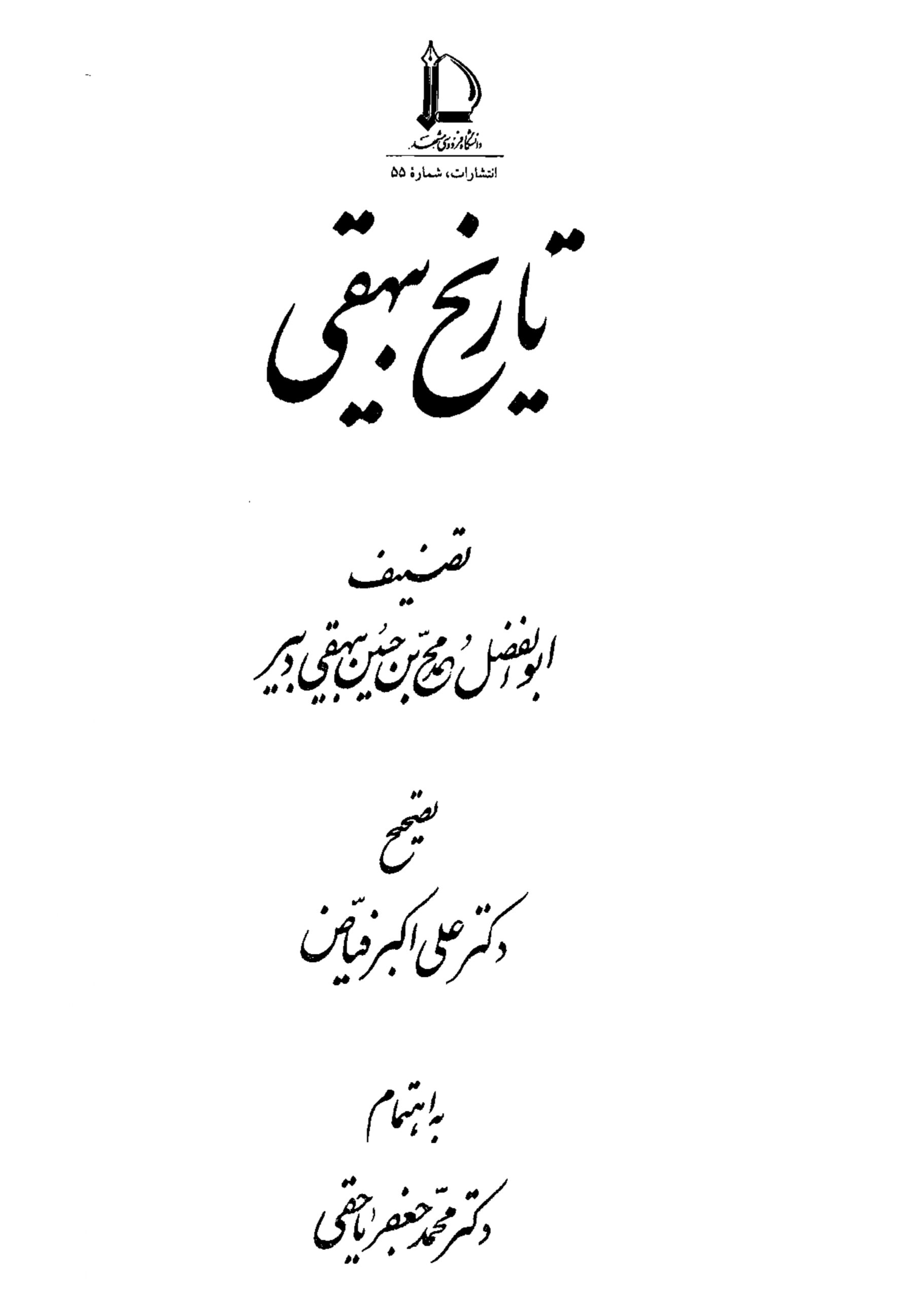Classical Persian through Historical Texts: Reading Beyhaqī’s History of Mas'ūd
August 26th - August 30th
2024
Course Outline
Instructor: Ruben S. Nikoghosyan
Languages: English, Persian
Duration of the Course: 1 week, 5 days (10 hours)
Frequency: 5 days per week
Duration of each Class: 2 hours (6 pm Yerevan Time)
Participation Fee: Free
Deadline for Applications: August 20th
Level of Persian: Intermediate, Advanced
Location: Online (Zoom classroom)
Text Edition: Abo’l Fazl Beyhaqī. Tārīx-e Beyhaqī. Moqaddame, towzīhāt va ta’liqāt az Manučehr-e Dānešpažuh. Bar asās-e nosxe-ye ‘Ghani-Fayyāz’ va nosxe-ye ‘Adib-e Pīšāvarī’ va nosxe-ye ‘Doktor Fayyāz’. Tehrān. Hīrmand, 1376. (dar 2 ǰeld).
Registration requirements: In order to register for the course, please click on the Apply button above and fill in all the boxes (all boxes are necessary). After filling in the boxes click Submit. We will contact you if your application is accepted, and send you further instructions for participation.
Note: All materials are provided by the instructor.

Beyhaqi’s History (Tārīx-i Beyhaqī) is a significant yet often overlooked work in Early Classical Persian literature. The text features an elegant and precise prose style, making it a quintessential example of Early Classical Persian writing. Its importance transcends historiography, offering valuable insights from literary and linguistic perspectives.
This course serves as an introduction to this masterpiece of Classical Persian prose, equipping participants with the essential grammatical, lexical, and stylistic tools to independently read, analyze, and comprehend the text.
After a week of intensive instruction, participants will have a deeper understanding of Classical Persian grammar and the structure and content of Baihaqi’s work, while enjoying the fascinating intrigues of the Ghaznavid court.
About the Course
Classical Persian through Historical Texts: Reading Beyhaqī’s History of Mas’ūd (11th c.) is an intensive 1-week course designed for students specializing in Iranian history, Persian language and literature, as well as enthusiasts eager to deepen their knowledge of Iran and Classical Persian literature.
Over the span of two weeks, the course will meet daily (Monday to Friday) for 2 hours each day. It will explore multiple chapters of Baihaqi’s book, providing students with the opportunity to study the original text. This approach aims to familiarize participants with Classical Persian grammar, formal expressions, lexicon, style, and technical vocabulary. The selected chapters cover a diverse range of topics, offering participants a profound understanding of the historical realities of the early 11th century, as depicted in the History of Mas’ūd.
Methodology
In my courses, I employ a simple yet highly effective method that combines literary, historical-linguistic, and philological approaches to clarify even the most obscure passages and words of a given text.
During this course, I will draw on my expertise in pre-Islamic (Middle) Persian language and literature, as well as my knowledge of both Iranian and non-Iranian languages, broader historical and geographical contexts, and, most importantly, literary contexts. This will help illuminate the meanings of the words, expressions, and ideas found in the text.
This method, which fundamentally involves explaining the underlying basis and logic of the text, will enable participants not only to understand the sections of Baihaqi’s Histories covered during the course but also to equip them with the necessary tools to read other historical Classical Persian texts independently.
Course Curriculum
Day 1. Chapter VII. Āğāz-i tārīx-i amir šihāb ad-dawla Mas‘ud b. Maḥmūd (raḥmat-ullāhi ‘alayhuma). p. 149
Passages:
- p. 150 (line 7) – p. 153 (line 15)
- p. 154 (lines 4 – 13)
- p. 156 (lines 8 – 14)
Day 2. Chapter VIII. Xuṭba
Passages:
- p. 157 (line 1) – 160 (line 1)
- p. 160 (line 4) – 164 (line 16)
- The Story of Nasr b. Ahmad Samani: p. 165 (line 1) – p. 167 (line 9)
- Šekastenafsi of Baihaqi: p. 167 (line 10) – 169 (line 2).
Day 3. Chapter IX. al-maqāmat fī ma‘ani wilāyat-il-‘ahdi bi-l-amir šihāb-ad-dawla Mas‘ūd (the adventures of the young Mas‘ūd).
Passages:
- p. 173 (line 1) – p. 175 (line 1).
- p. 187 (line 3) – p. 193 (line 2).
Day 4. ðikr-i ḥikāyat-i afšīn wa xalāṣ yāftan-i Bu Dolaf az way. Part 1.
Passages:
Entire chapter: p. 265 – p. 274
Day 5. ðikr-i ḥikāyat-i afšīn wa xalāṣ yāftan-i Bu Dolaf az way. Part 2.
Reading passages:
Continuing reading the chapter: p. 265 – p. 274
About Beyhaqi and his History
Abo’l-Fażl Beyhaqī, a distinguished historiographer of Iranian origin, authored a significant work on Ghaznavid history around 1060 AD, which stands as a pinnacle of Early Persian historiography.
Beyhaqī, closely connected to the sophisticated Ghaznavid bureaucratic apparatus, drew upon personal observations, eyewitness accounts, and official documents accumulated during his extensive service at the Ghaznavid court.
His meticulous and fact-based historiographical approach, akin to that of Thucydides, renders his book—though only a fragment survives to our times—an invaluable source for researchers delving into Early Islamic Iranian history. Additionally, the work’s high literary value and its simple yet elegant language make it a compelling read for enthusiasts of Persian language and literature.
Beyhaqī’s Histories not only presents dramatic descriptions of historical events but also weaves intriguing narratives about court life, royal manners, political intrigues, wars, and various other captivating topics.